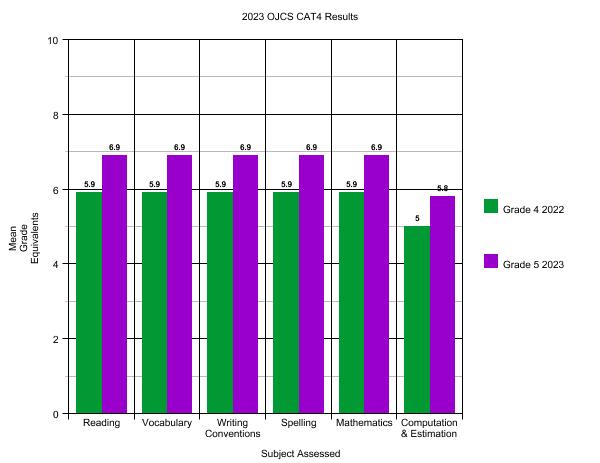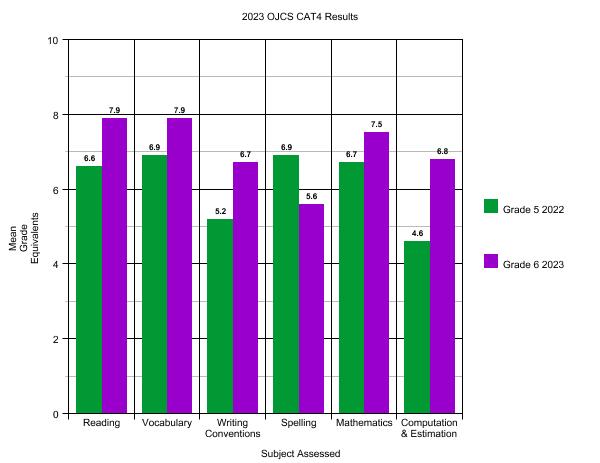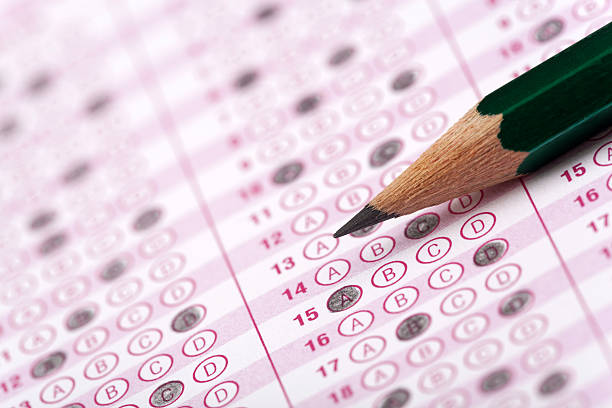Welcome to “Part II” of our analysis of this year’s CAT*4 results!
In last week’s post, we provided a lot of background context and shared out the simple results of how we did this year. Here, in our second post, we are now able to begin sharing comparative data, focusing on snapshots of the same cohort (the same children) over time. It is complicated because of three factors:
- We only began taking the CAT*4 at this window of time in 2019 in Grades 3-8.
- We did NOT take the CAT*4 in 2020 due to COVID.
- We only took the CAT*4 in Grades 5-8 in 2021.
- We resumed taking the CAT*4 in Grades 3-8 in 2022.
This means that there are only five cohorts that have comparative data – this year’s Grades 4-8. And only two of those cohorts have comparative data beyond two years – this year’s Grades 7-8. It is hard to analyze trends with without multiple years of data, but we’ll share what we can.
Here is a little analysis that will apply to all five snapshots:
- Remember that any score that is two grades above ending in “.9” represents the max score, like getting a “6.9” for Grade 5.
- Bear in mind, that the metric we are normally looking at when it comes to comparing a cohort over time is whether or not we see at least one full year’s growth (on average) each year – here we are factoring an expected two full year’s growth between 2019 and 2021. [Feel free to refer to prior years’ results for specific analyses of both “COVID Gaps” and “COVID Catch-Ups”.]
- In 2023 we took it in the “.1” of the school year and in all prior years in the “.2”. If we are being technical, therefore, “.9” would actually be the truest measure of growth since the time frame is “.1” less. For the purposes of this analysis, I am going round “.9” up and consider it a “year’s” worth of growth.
Here are the cohort snapshots:

What does this snapshot of current Grade 4s reveal?
- Huge growth in Reading, Vocabulary and Writing Conventions.
- Better context for Spelling. Last week, we shared that Grade 4 Spelling (3.4) was one of only two instances out of thirty-six of scoring below grade-level across the whole school. Here we can see that despite that (relatively) “low” score that annual growth is intact. That’s the positive. On the other hand, in order for this score to fully catch up to our school’s expectations, it will have grow more than one year at a time over the next few years.
- Better context for Math. Although both of this year’s current scores are above grade-level expectation, we did not see the growth we would expect. This is why we take the tests and provide our teachers with not only the results, but coaching on how to use the results. Our Grade 4 Math Teacher now has the data she needs to help individual students fill gaps and best prepare students for math success in Grade 5.

What does this snapshot of current 5s reveal?
- That they are crushing it! Max scores in all, but one category, along with appropriate growth.
- Better context for Computation & Estimation. Both scores are well above grade level, almost-appropriate growth from year to the next, and there is still room to grow. Let’s go!

What does this snapshot of current Grade 6s reveal?
- Again, overall really strong scores and mostly strong growth.
- Better context for Writing Conventions. It may not max out, but we showed more than a year’s worth of growth.
- Better context for Spelling. We already knew that Grade 6 Spelling (5.6) was the other of the two instances out of thirty-six of scoring below grade-level across the whole school. Now we know that it went down. Hmmm…this could be an anomaly. This is why we keep anecdotal records; maybe we’ll learn something about when Grade 6 took this section that helps explain the results. Or maybe it is something. Our Middle School Language Arts Teacher will be on it.
- Better context for Computation & Estimation. Again, it didn’t max out, but we can see huge growth from last year.

What does this snapshot of current Grade 7s reveal?
- That they and their teachers are crushing it!
- Better context for Computation & Estimation. It shows that even though this score is lower than their other max scores, while still being above grade-level, it grew more than a year’s worth from last year.

No analysis of current Grade 8s needed, just appreciation for three years of near perfection. Not a bad advertisement for OJCS Middle School.

To sum up this post, we have so much to be proud of in the standardized test scores of these particular cohorts over time. The Math and Language Arts Teachers in Grades 3-8 have now begun meeting to go through their CAT*4 results in greater detail, with an eye towards what kinds of interventions are needed now – in this year – to fill any gaps (both for individual students and for cohorts); and how might we adapt our long-term planning to ensure we are best meeting needs. Parents will be receiving their child(ren)’s score(s) soon and any contextualizing conversations will be folded into Parent-Teacher Conferences.

Stay tuned next week for the concluding “Part III” when we will look at the same grade (different students) over time, see what additional wisdom is to be gleaned from that slice of analysis, and conclude this series of posts with some final summarizing thoughts.

